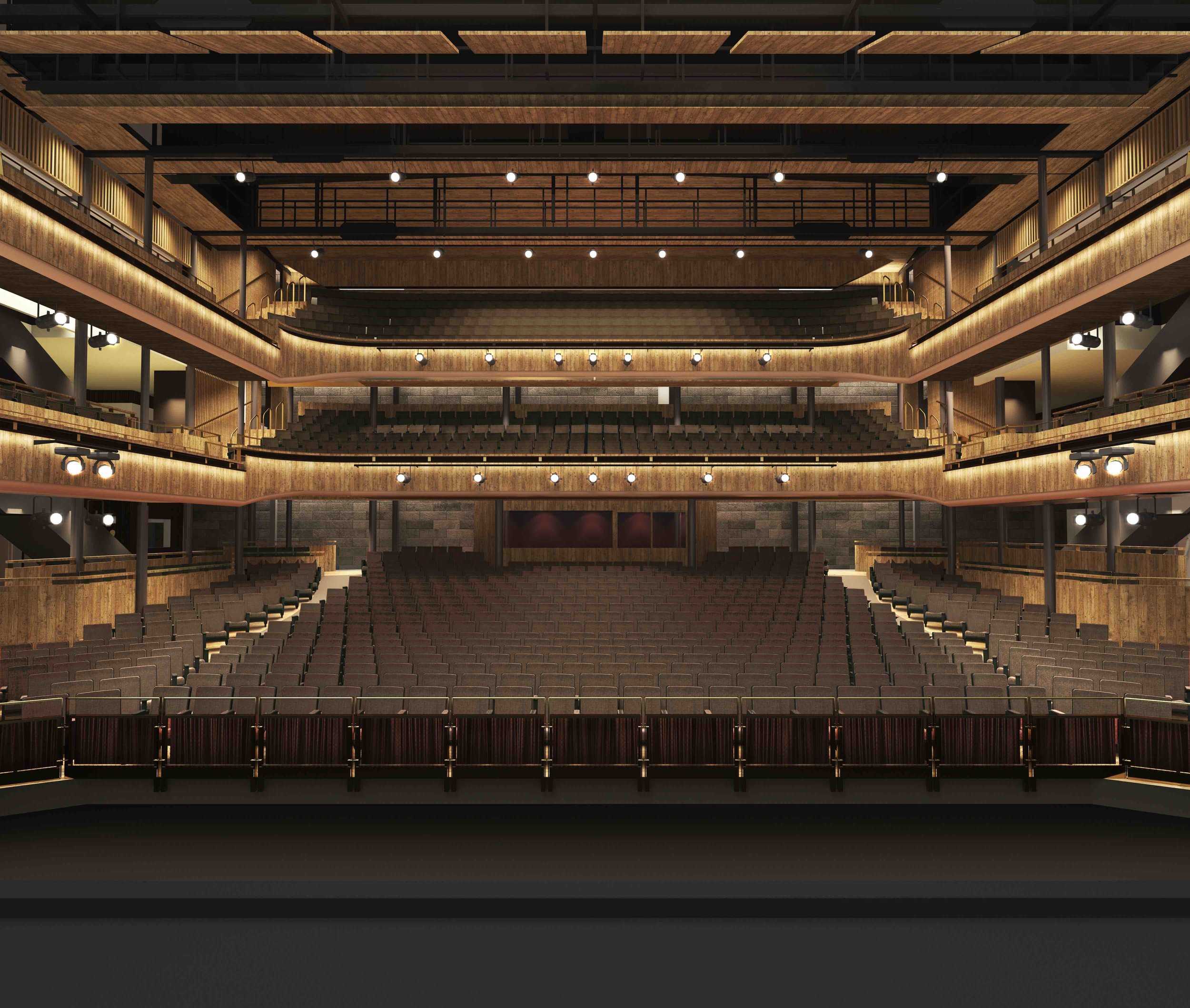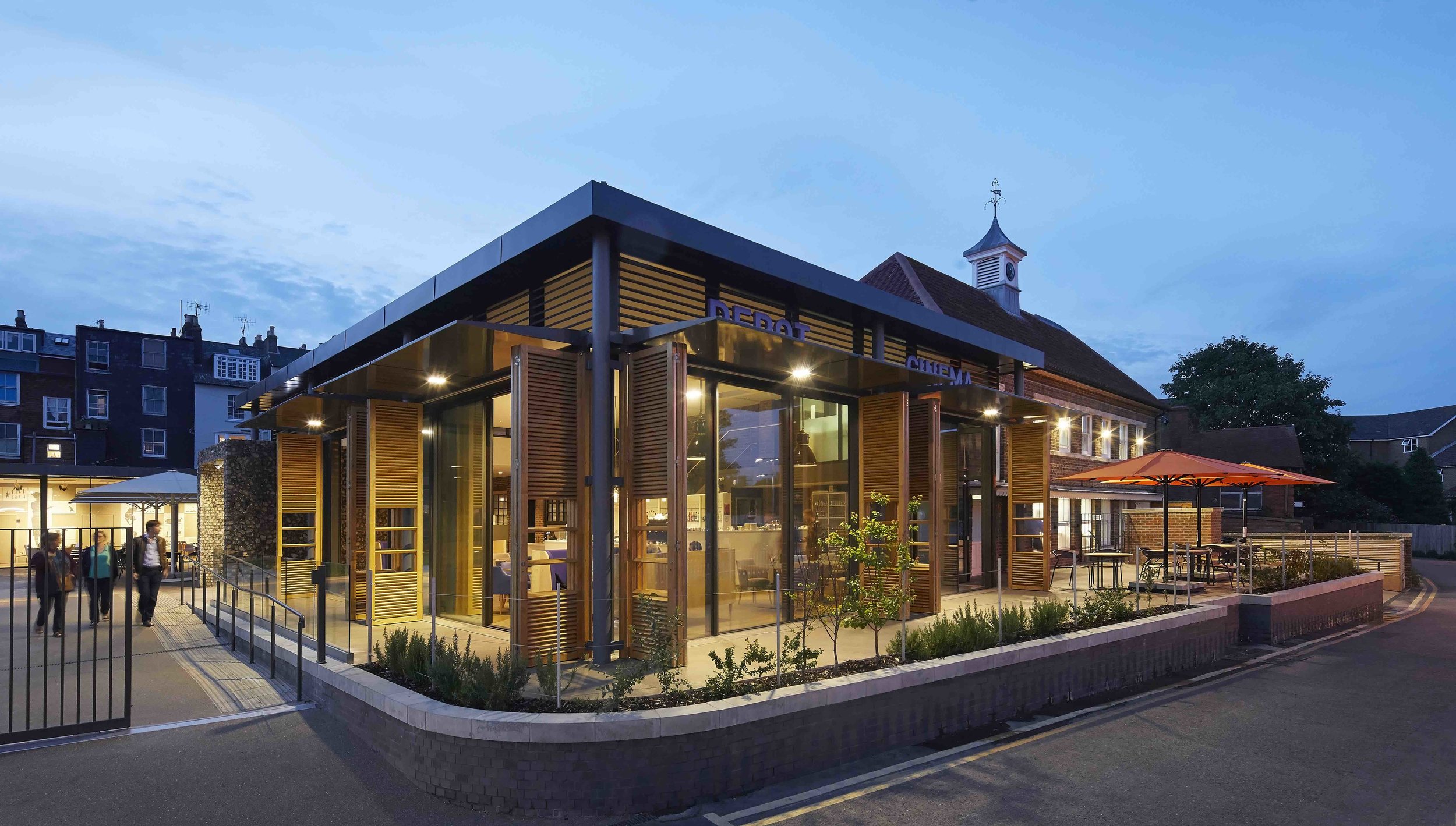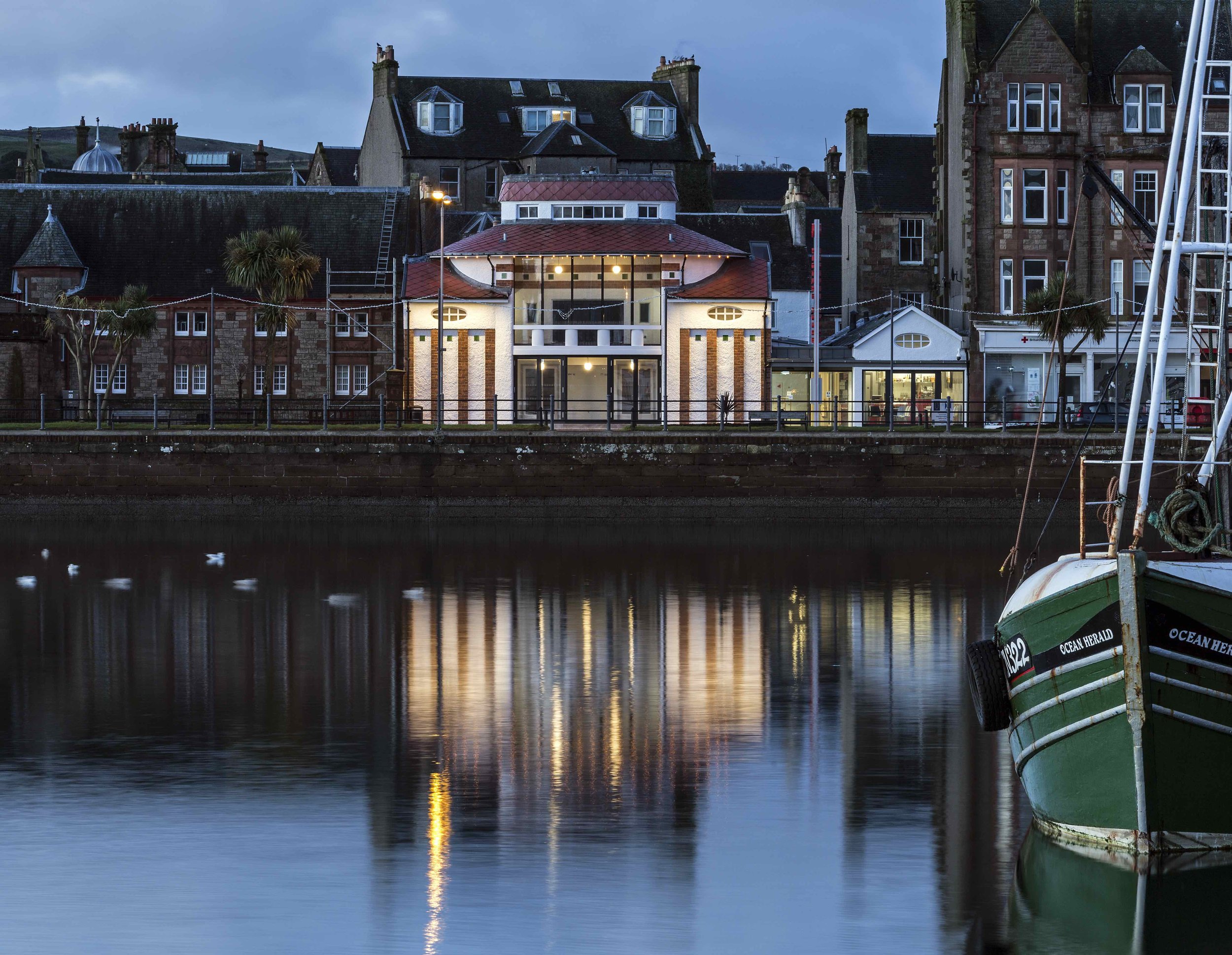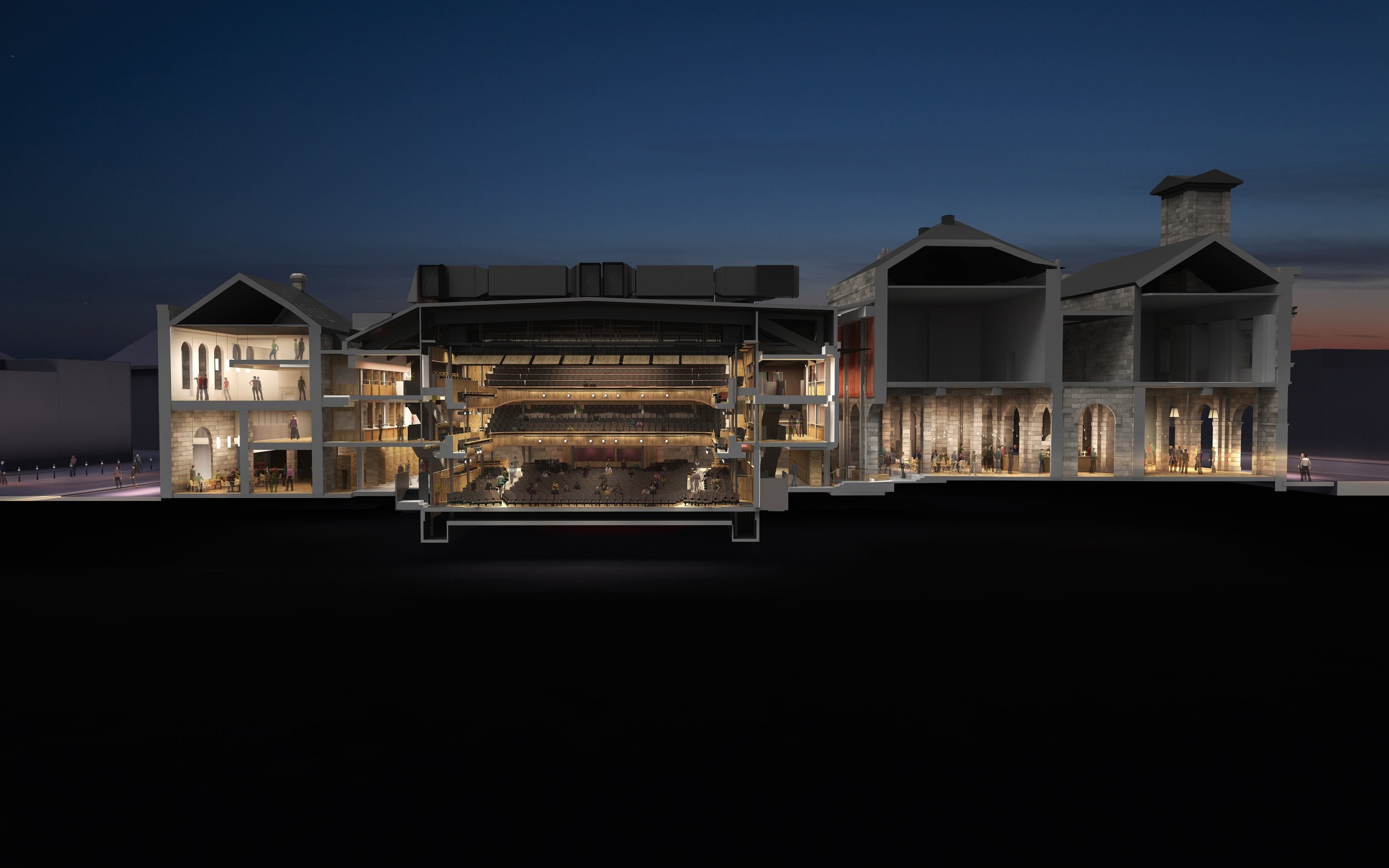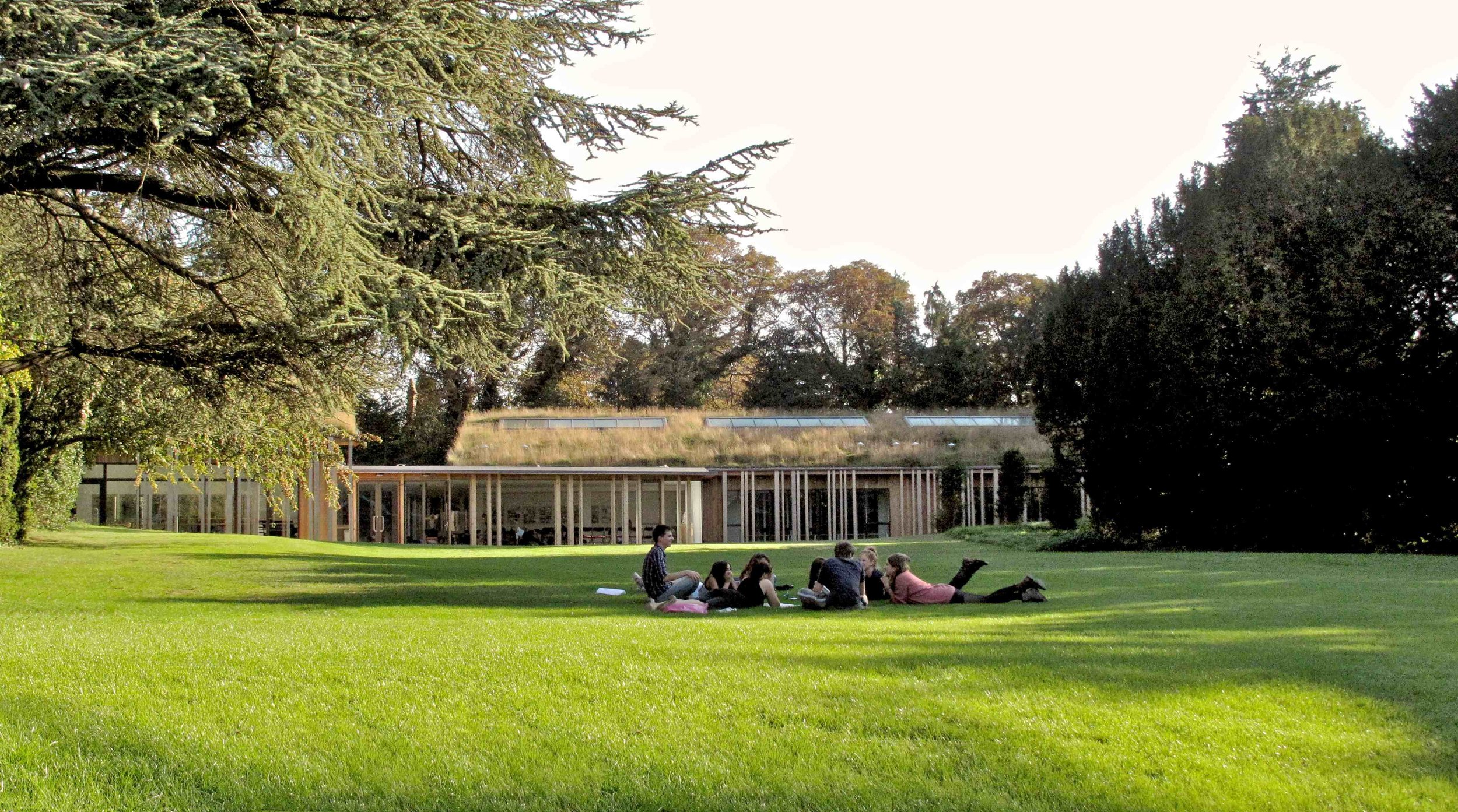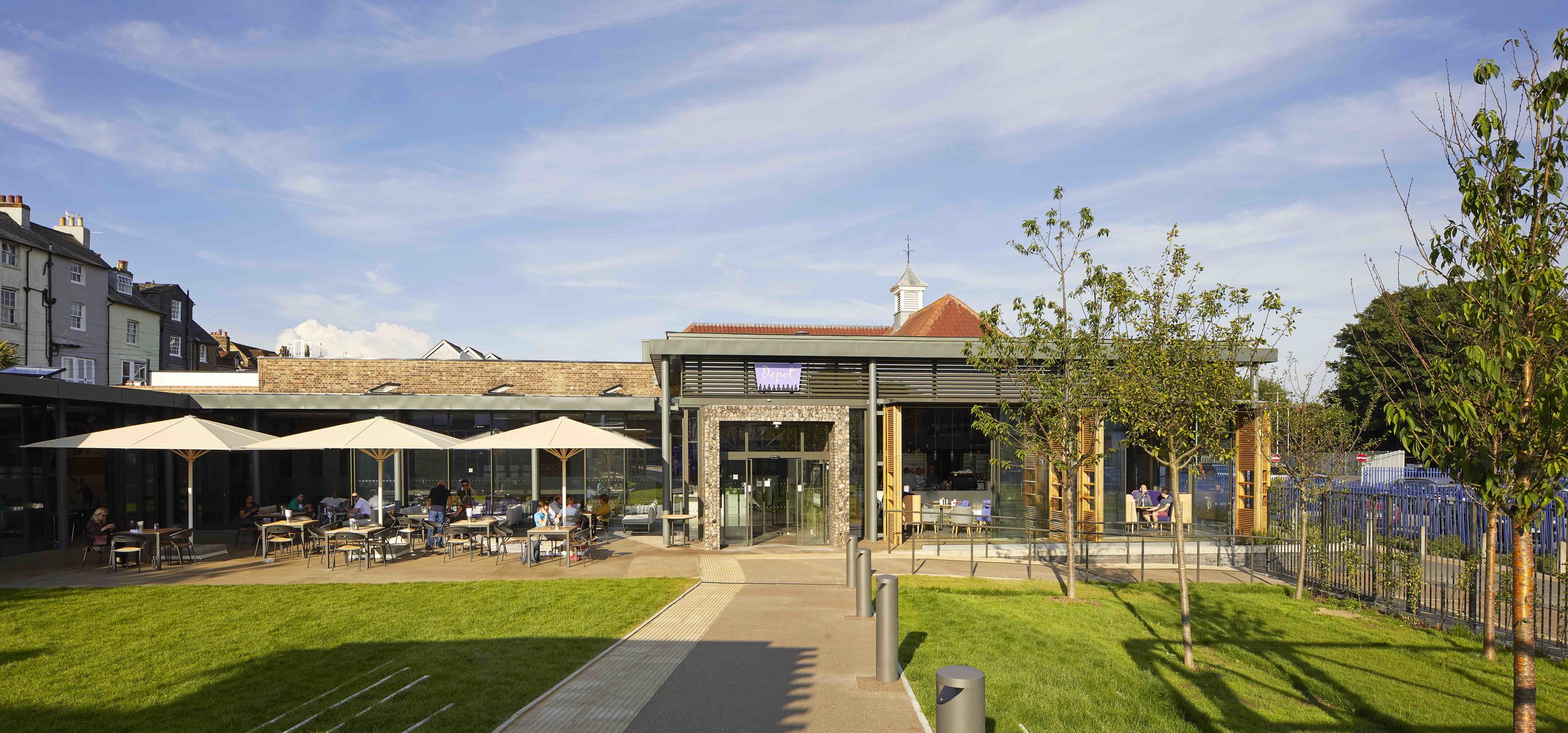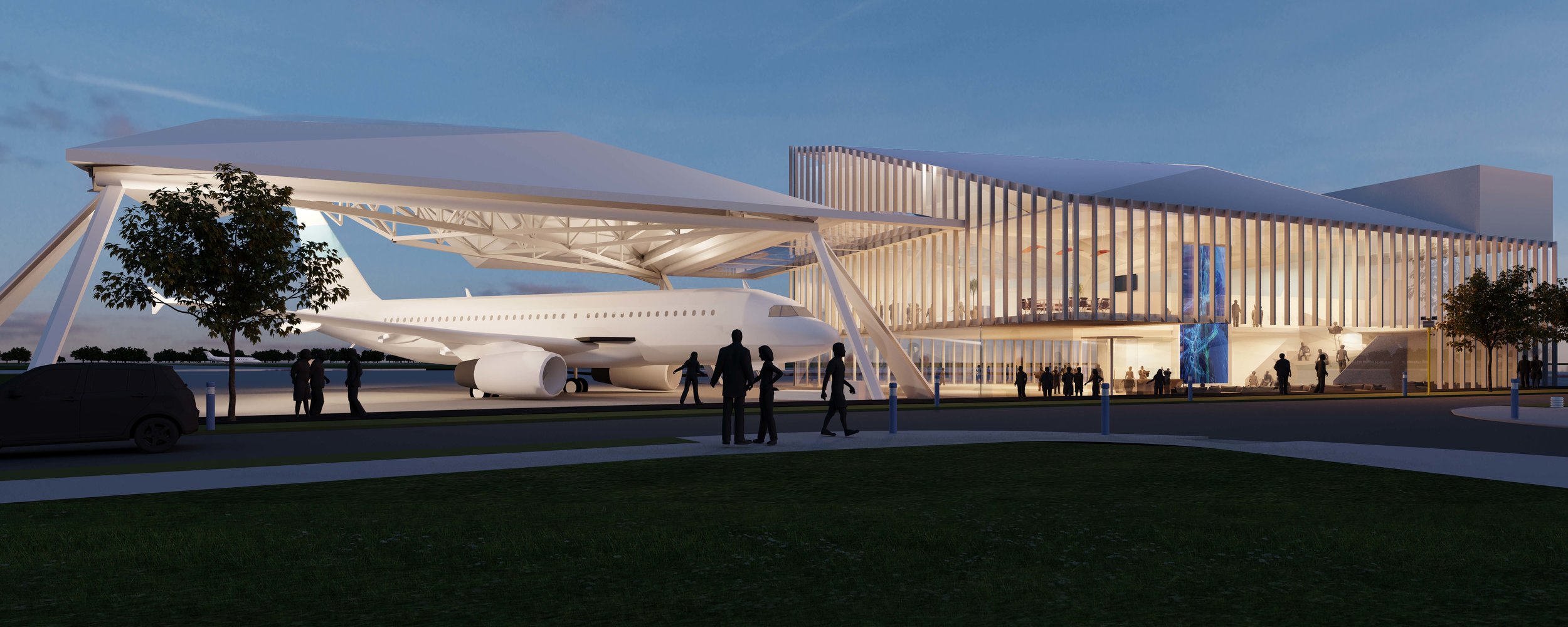The restoration and remodelling of the Campbelltown Picture House has been awarded Best Rescue of a Historic Building or Place (for projects over £2m) at the 2018 Scottish Heritage Angel Awards. The award was collected by Jane Mayo, Chairman of the Picture House at a ceremony held at Glasgow City Chambers.
The Picture House has the joint accolade of being one of Europe’s few surviving atmospheric cinemas and Scotland’s oldest purpose-built cinema still in operation. The conservation project, led by Burrell Foley Fischer, restored the art nouveau exterior and the historic main auditorium to its 1930s design, and provided a new state of the art second screen, café, education room and other facilities.
Designed by Albert V. Gardner, one of the most celebrated cinema designers in the first half of the 20th century, Campbeltown Picture House opened in 1913. Gardner had studied architecture at The Glasgow School of Art between 1901 and 1905, and the influence of this seminal building is reflected in the Glasgow School Art Nouveau design of the 1913 building. Twenty years later Gardner was invited back to Campbeltown to modernise the interior of the cinema which he did in the “atmospheric” style which was all the rage at the time.
Popular from the late 1920s atmospheric cinemas transported audiences to exotic places such as European courtyards or gardens. The ceilings were often painted with starry skies or with wispy floating clouds and other elements such as trellises, balconies and painted trees created the special atmosphere. Few of these cinemas now survive with Campbeltown Picture House being the only extant example in Scotland and one of only a handful in Europe.
For Campbeltown Picture House Gardner embellished the cinema with a blue sky with moving white clouds projected across it, and two plasterwork buildings (known locally as the “wee houses”) on either side of the screen that gave the ambiance of a Mediterranean courtyard. These special features have been meticulously restored with other elements of the original design such as the stunning art deco lights recreated by contemporary craftspeople.
Jane and David Mayo collecting the award
The re-launch of the cinema marked the culmination of more than three decades of work and commitment by Campbeltown Community Business Ltd to bring this historic gem back to its full glory.
Launched in 2014, funded by the Andrew Lloyd Webber Foundation, and run by the Scottish Civic Trust in partnership with Historic Environment Scotland and Archaeology Scotland, the Scottish Heritage Angel Awards celebrates both groups and individuals who have gone above and beyond in their efforts to promote, protect and, in many cases, rescue Scotland’s heritage.







